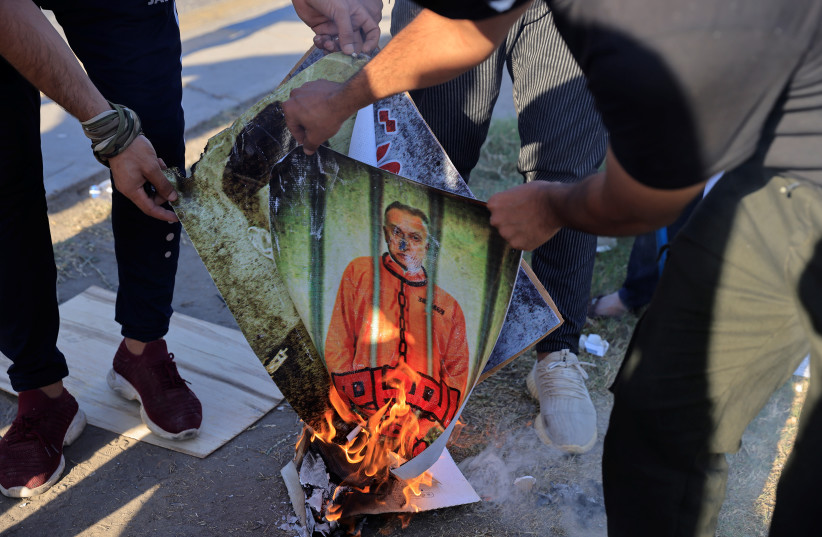A drone attack recently targeted Iraqi Prime Minister Mustafa al-Kadhimi, in what Iraqi security sources described as an assassination attempt, heightening tensions between Iraqi forces and Shia militant groups.
According to the Iraqi Interior Ministry, three drones were used in the attack, two of which were shot down by Iraqi security forces while the third managed to damage property.
Despite the lack of a claim of responsibility, observers suspect that the incident was carried out by pro-Iranian Shi’ite groups who have taken part in similar attacks on Baghdad’s Green Zone. The attack bore all the hallmarks of the same pro-Iranian militias who attacked the US Embassy in Baghdad and Erbil International Airport.
The Iraqi prime minister was most likely targeted by Iraqi Shia Militia groups, as there are unlikely any other suspects in Iraq with drones suitable for such an attack. Pro-Iran groups use drones for a number of reasons, one of which is that it is difficult to discover who is behind them once they have been launched.
The attack came after pro-Iranian groups threatened Kadhimi, accusing him of being responsible for casualties in a recent clash between Iraqi security forces and pro-militia demonstrators protesting recent election results, in which pro-Iranian militias suffered significant losses in parliament.

Just days before the drone attack, both Qais Khazali, the founder and leader of the Asa’ib Ahl al-Haq militia group and Abu Ala al-Walai, a leader of the Kata’ib Sayyid al-Shuhada threatened Kadhimi.
Khazali, who was also present among the demonstrators, said that Kadhimi should be held accountable for his conduct against the demonstrators, who have been holding rallies outside Baghdad’s guarded Green Zone demanding that the votes be manually counted.
Kadhimi was Iraq’s intelligence chief before becoming prime minister last May. As a result of his efforts to retain ties with both the US and Iran, militias believe he is close to the US.
In addition to executing civilians and activists, Shi’ite militias linked to Iran use rockets and drones to attack US troops, Iraqi armed forces and US-aligned forces such as those in Iraqi Kurdistan.
This appears to be the second drone assassination attempt on a state leader. It is imperative that they respond decisively to ensure that this is the last such effort, at least for the time being. This implies a shift in both Iraqi and American strategies in the region.
Iraq is being turned into a republic of fear by Iranian proxy militias. Hundreds of Iraqis linked to the protest movement have been killed, more have been injured, and activists are being regularly assassinated or kidnapped by these countless groups.
These groups should be designated as terrorists so they can no longer enjoy the state’s legitimacy, and their leaders and associates can no longer threaten Iraqi officials. As members of the so-called “Popular Mobilization Force” (PMF), these militia groups have constitutional legitimacy and access to at least $2 billion in federal funding.
In Iraq, Washington’s counterterrorism strategy is centered on ensuring the long-term destruction of ISIS and its remnants. However, in addition to fighting ISIS remnants, the US and Iraqi forces should devise a strategy to attack these militia groups and degrade their bases. The incorporation of these militia organizations within Iraq’s political structure and society prevents the use of the same strategies used to fight ISIS. So, a new and decisive strategy should be implemented by both the US and the Iraqi forces to limit the movement and activity of these groups.
Shi’ite militia groups linked to Iran could be at least partially defeated in a feasible and long-term manner if the United States and its allies began to openly identify them as a terrorist group and implement policies accordingly.
As the record shows, between January and October of last year, nine different Shia militia groups with various names have been established in Iraq.
Following the January 2020 drone attack that killed both Iranian al-Quds Force commander Qassem Soleimani and Iraqi militia leader Abu Mahdi al-Muhandis, Iraq has seen the emergence of dozens of new small groups that are more enraged than prior groups. Among these groups that have appeared in Iraq, Rab’ Allah has made a name for itself, threatening to retaliate against Americans. The group has already taken responsibility for several other attacks toward other opposing groups.
The writer is an Iraqi Kurdish political and security analyst, researcher at the Department of Political Science at Louisiana State University, and also has a graduate degree in terrorism and international security from the Sam Nunn School of International Affairs at the Georgia Institute of Technology in Atlanta.
